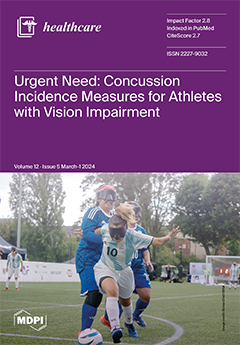Maintaining mental health is essential for professions with higher stress levels and challenging environments, including emergency specializations. In this study, the occurrence of distress, anxiety, and depression among a group of ambulance and hospital emergency care professionals was assessed (
n = 202).
[...] Read more.
Maintaining mental health is essential for professions with higher stress levels and challenging environments, including emergency specializations. In this study, the occurrence of distress, anxiety, and depression among a group of ambulance and hospital emergency care professionals was assessed (
n = 202). A cross-sectional, quantitative, descriptive online survey was conducted, including the internationally validated Beck depression inventory (BDI), the perceived stress scale (PSS-14), and the State–Trait Anxiety Inventory (STAI). Statistical analyses involved descriptive statistics, the χ
2-test, Mann–Whitney U test, Kruskal–Wallis test, Dunn–Bonferroni test, logistic regression (LR), Cramer coefficient (Cramer’s V), Kolmogorov–Smirnov test, and Spearman’s rank correlation coefficient (r
s). Based on the results, female professionals are more likely to have depressive symptoms (OR = 2.6, 95% CI = 1.3–5.1), perceived stress (OR = 1.2, 95% CI = 1.2–4.1), and anxiety (OR = 2.1, 95% CI = 1.0–4.1) than male professionals. Perceived stress levels decreased proportionally with increasing years spent working in healthcare (OR = 7.4, 95% CI = 7.1–8.3). Extended work shifts of 12 or 24 h increase the risk of perceived stress and anxiety in emergency care workers (
p = 0.02). Customized stress management interventions are needed to mitigate the amplified mental strain associated with gender, working years, and longer shifts in the emergency care sector to sustain their mental health and well-being.
Full article






